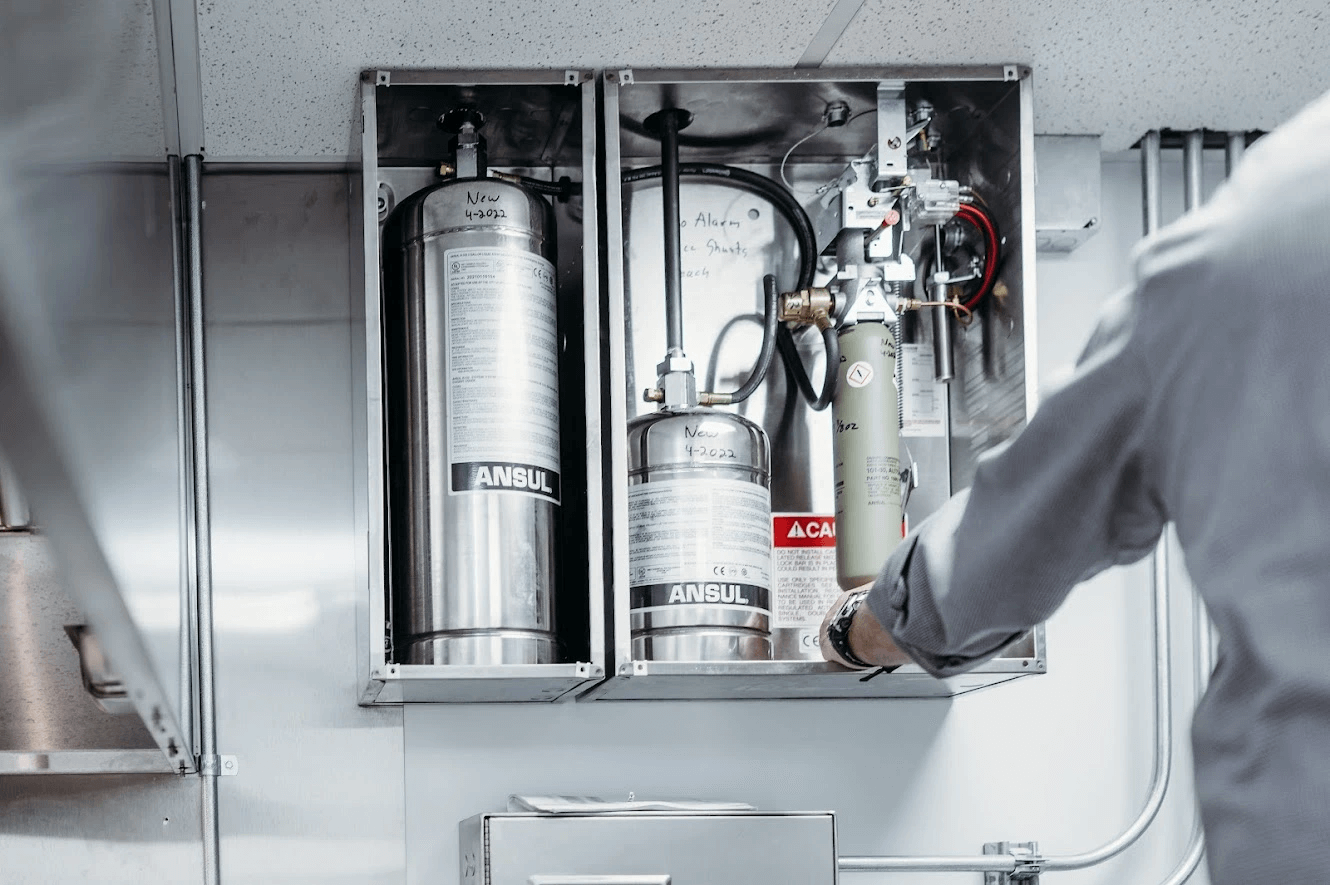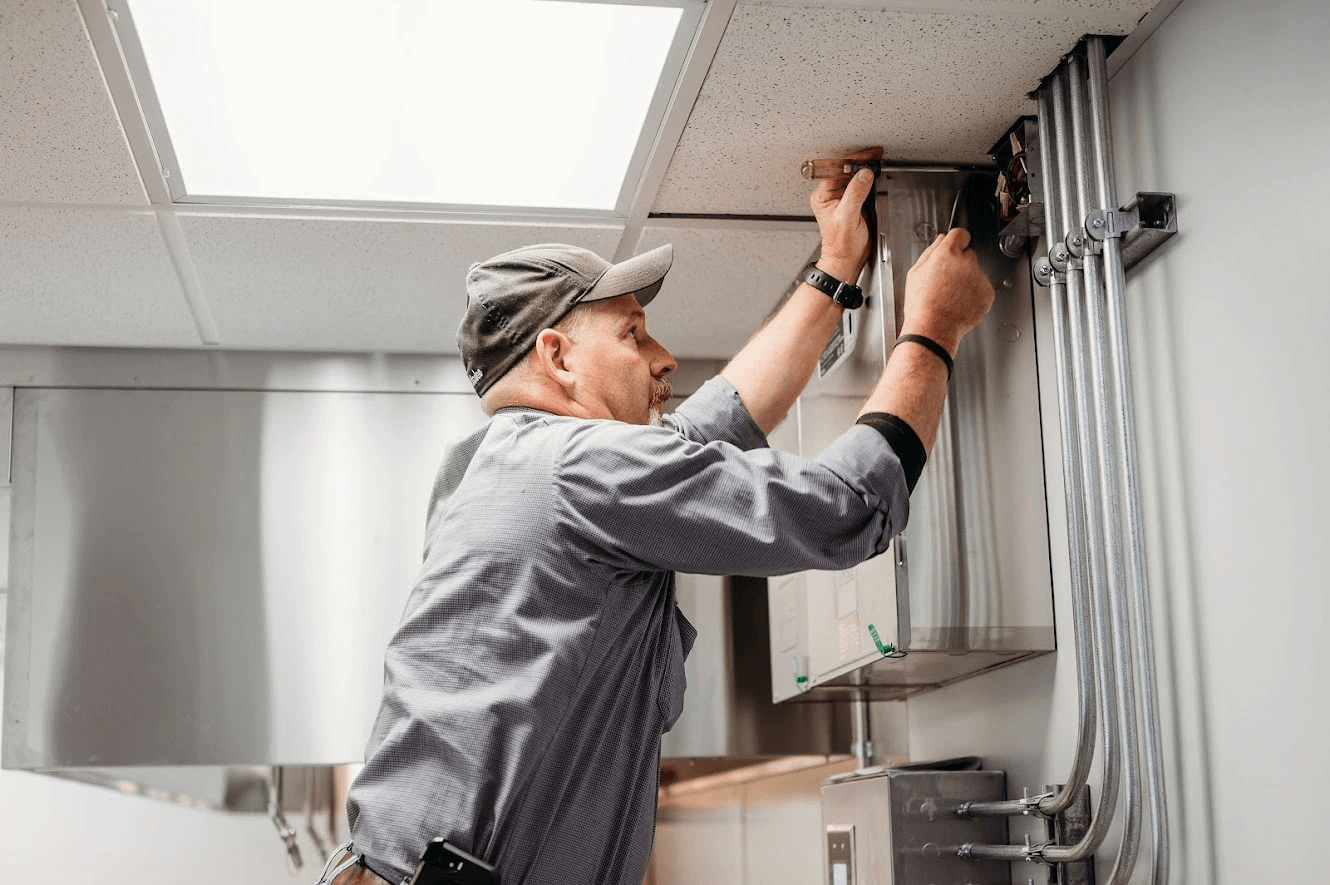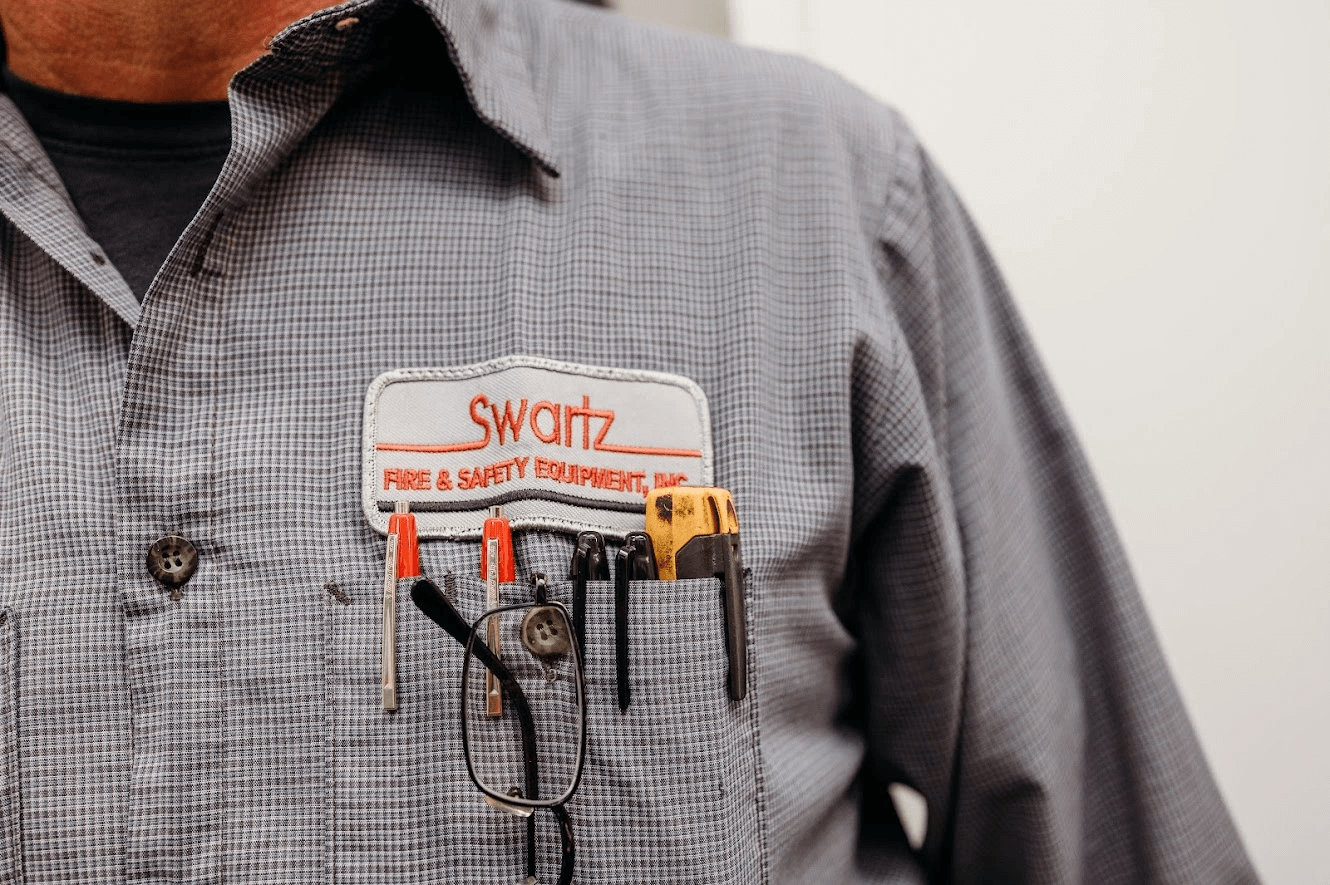How Does a Hood Suppression System Work? | State College, PA

If you're running a commercial kitchen or a restaurant, you know how hectic things can get. And in the middle of that busy environment of sizzling pans and bustling chefs, fire risks are always lurking.
The threat of fire is a serious one, so protecting your staff, customers, and the business you've worked hard to build should be a top priority. A hood suppression system can help with that.
Restaurant fire suppression systems work by stepping in to tackle fires before they turn disastrous. Let's look at how they function and why they're a must-have in commercial kitchens such as yours.
Key Takeaways
- Hood suppression systems are specialized for commercial kitchens, using gases, liquids, or foam instead of water to effectively combat kitchen-specific fires like grease fires.
- These systems not only enhance safety by quickly responding to and extinguishing restaurant fires, but they also help minimize damage and ensure compliance with fire safety regulations.
- Regular maintenance and adherence to NFPA standards are crucial for the effectiveness and reliability of hood suppression systems, including routine inspections and hydro testing.
How Fire Suppression Systems Work

The right fire suppression system is not just equipment—it's a crucial safeguard. Here's how hood suppression systems work to keep your kitchen safe.
The mechanism behind the safety
Hood suppression systems are specifically designed for the high-risk environment of commercial kitchens. These systems use a mix of gases, liquids, or foam agents to combat fires. This is especially effective against grease fires, which can't be extinguished by water.
The real game-changer in these systems is their quick response. They're engineered to detect excessive heat or flames automatically. Once a potential fire is detected, the system activates and discharges its extinguishing agents directly onto the fire.
In addition to automatic triggers, there’s often a manual pull station, allowing staff to activate the system instantly if needed.
Tailored to tackle kitchen fires
What sets these systems apart is their ability to handle the specific types of fires that occur in kitchens. They're designed to control the situation without causing more damage.
Unlike traditional fire systems, which use water to extinguish fires, a hood fire suppression system uses chemicals designed to smother grease fires quickly and efficiently while also ensuring safety and minimal cleanup afterward.
The water of a fire sprinkler system can spread grease fires, making them more dangerous. That’s why hood suppression systems, with their specialized agents, are the preferred choice in a kitchen setting.
Why You Should Get One
The primary role of a hood suppression system is to enhance safety. Here are ways they work to keep you safe:
- Minimize damage and prevent fire spread - A major benefit of hood suppression systems is their ability to extinguish flames at the source. This containment is key in reducing damage to property and equipment, saving costs on repairs and downtime.
- Compliance with safety regulations - Hood suppression systems are a critical part of meeting fire safety regulations. Regular inspections and maintenance ensure that your system is always up to code and operates within the legal safety parameters.
- A layer of protection for your business - These systems offer long-term benefits, such as protecting your investment in your kitchen and equipment and safeguarding the reputation of your business. In the event of a fire, a swift and effective response can be the difference between a minor incident and a major catastrophe.
Maintenance and Inspection Requirements

Now, having a fire suppression system installed is just the first step to a safer workplace. It also means a commitment to ongoing maintenance and inspection, which ensures your system remains reliable and effective over time. Here is what that covers:
- Regular system inspections and maintenance - The heart of maintaining your hood suppression system lies in regular inspections. These are detailed examinations of every part of the system to make sure that everything from the nozzles to the chemical agents and the manual pull station is in perfect working order. The inspection also involves checking the alignment of the system with your current kitchen layout and ensuring no changes in the cooking equipment or ventilation system have occurred since the last inspection. Routine maintenance includes checking for obstructions in the nozzles, ensuring the right pressure levels, and verifying that the manual activation options are fully operational.
- Hydro testing - An essential part of maintaining a fire suppression system is hydro testing. This process involves testing the integrity of the system's tanks and hoses under pressure. Typically, tanks should undergo hydro-testing every 12 years for non-pressurized systems and every seven years for pre-pressurized systems. This test ensures that in the event of a fire, your system will perform as expected, without any leaks or malfunctions.
- Adherence to NFPA standards - The National Fire Protection Association (NFPA) sets the guidelines for the inspection, testing, and maintenance of fire suppression systems. Following NFPA 17A and NFPA 96 standards ensures that your system not only meets legal requirements but also operates effectively. These standards guide everything from how often inspections should occur to the specific procedures for testing and maintenance.
Suppress Fires Instantly and Make Your Kitchen a Safer Place
Don't wait for flames to dictate your next move. With Swartz Fire and Safety, empower your kitchen with the ultimate shield against fire emergencies.
Whether you're setting up a new hood suppression system or fine-tuning an existing one, our experts are ready to tailor a solution that meets the unique needs of your busy kitchen.
Dive into the world of advanced fire suppression with us. Contact us today to discover a range of systems that are not just effective but are designed to blend seamlessly into the heart of your culinary operations.
Summary
Wrapping up our journey through the world of hood suppression systems, it's become evident that their role extends far beyond just ticking off safety requirements. These systems stand as a dynamic line of defense to actively shield your commercial kitchen from the constant threat of fires.
Equipped with advanced detection technology and specialized fire-fighting agents, they're built to react quickly and decisively. This means less damage in the event of a fire and, more importantly, a safer environment for everyone in your kitchen.
Frequently Asked Questions
What is a kitchen hood suppression system?
A kitchen hood suppression system is a fire protection system designed specifically for commercial kitchens. It uses various agents like gases, liquids, or foam to quickly suppress fires, particularly grease fires, which are common in kitchen environments.
What is the purpose of a fire suppression system?
The primary purpose of a fire suppression system is to quickly detect and extinguish fires, thereby protecting property, equipment, and people within a commercial setting like a kitchen.
What triggers a kitchen fire suppression system?
Kitchen fire suppression systems are typically triggered by the detection of excessive heat or flames. Many systems also include manual pull stations that allow for immediate activation by kitchen staff in case of a fire.
What is the function of the gas suppression system?
A gas suppression system in a kitchen is designed to quickly extinguish fires by releasing gas agents. These systems are often used in environments where using water or foam might be damaging or less effective, such as in server rooms or kitchens with electrical equipment.


